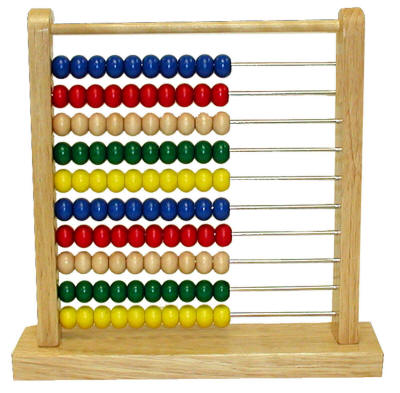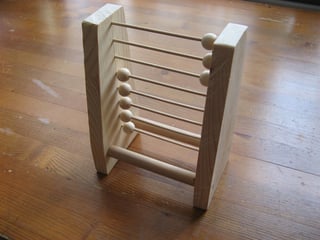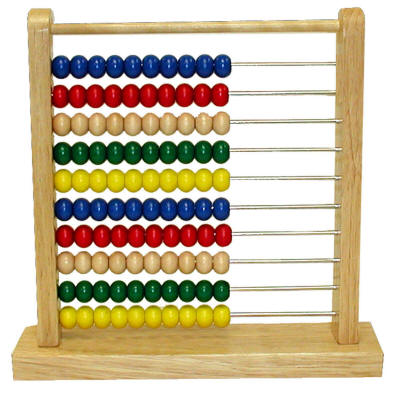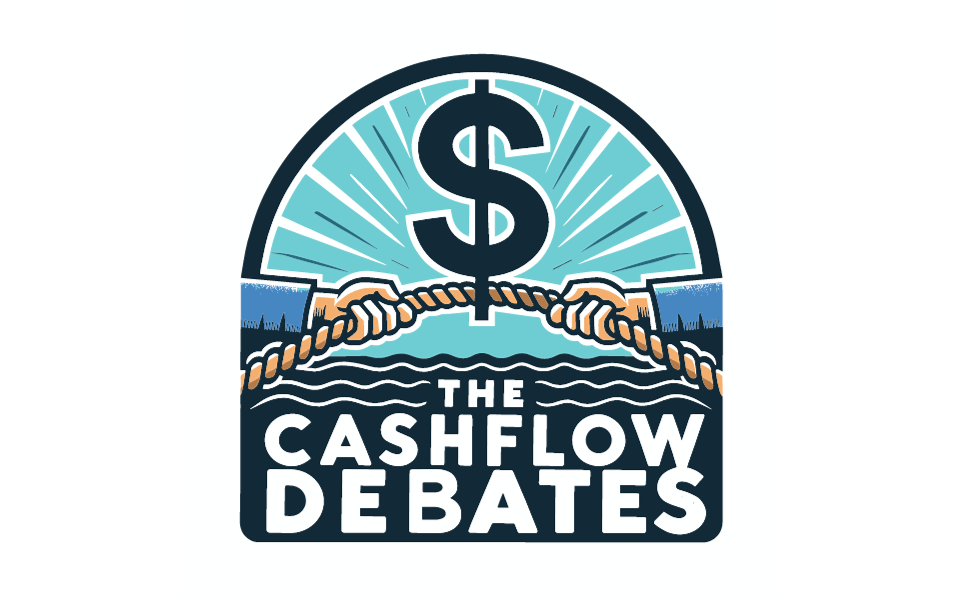The Zombie apocalypse has arrived. Your cellar is stocked with canned goods and spam. You’ve got a crossbow in hand. Sounds like you’ve thought of everything… except how you’ll run your business when the power grid shuts down and modern computers are rendered obsolete!
Okay, we’ve been watching a little too much Walking Dead.
But realistically, how did entrepreneurs get by in the days before calculators and computers? What would you do if you were suddenly left without modern electronics to help you balance your books?
Today, we’re kicking it old school—a few millenniums old to be exact—and showing you how to use an abacus.
What Is It?

An abacus is that weird looking contraption right there. Also called a counting frame, it’s a series of wires and beads arranged in rows that allows the user to perform mathematic calculations, no electronic calculator required.
The abacus has been used for centuries by merchants, clerks, students and accountants to get the job of crunching numbers done. In fact, the thing has been around so long that even the smartest historians can’t agree who invented it.
What we do know is that it was used by the Mesopotamians, Egyptians, Persians, Chinese, Greeks, Romans and more, with the earliest documented use dating back some 4,000 years ago.
Some versions of the abacus have ten beads on each row, others five, but the general function of each model is the same.
How Does It Work?
Each of the rows on the abacus represents a different numeric place—ones, tens, hundreds, thousands and so on.
Using these rows of multi-colored beads, you can perform addition, subtraction, multiplication, division and even more complex functions like square root and cube root.
We’ll begin with the most basic function: addition.
Let’s say we’re going to perform the calculation 8 + 7. Go big or go home, right?
Start with your smallest row—the ones—on the bottom. Begin counting out 8 beads by sliding them from left to right.
Next, you’ll want to add 7 more beads. But before you can do that, you’re going to run out of beads to count with in the bottom row.
It’s time to trade your 10 ‘ones’ for a ‘ten’ bead. Slide all 10 ‘ones’ back to the left, and 1 ‘ten’ bead from the second row over to the right. Now, continue counting the rest of your 7 ‘ones' on the bottom row.
When you’re done counting, you end up with 1 ‘ten’ bead and 5 ‘one’ beads, which represents the number 15.
8 + 7 = 15. Ta-da!
Seem confusing? Don’t worry. We’ve found that the abacus is much easier to learn by watching someone else use it. To see a real-time example of how to perform addition, as well as multiplication and division, watch the short video above.
The Abacus in the Real World
We know what you’re thinking: aside from an actual Zombie apocalypse, when would someone really use an abacus in modern times?
The answer might surprise you.
Professional use. In countries without widespread access to modern computers, like parts of Asia and Africa, the abacus is used regularly by accountants and merchants. A Chinese bank teller explained to Chinafrica Magazine how she uses the abacus in conjunction with a standard computer to do her job.

Teaching computing. One version of the abacus seen here, called a binary abacus, is a useful tool for explaining how computers store letters, numbers and symbols using the binary system or ASCII code.
For the blind. Finally, perhaps one of the coolest implications of the abacus is its use for the blind. We often take for granted how easy it is to just tap out some math on a calculator, or in desperate measures, using pencil and paper.
The blind don’t have this luxury. For them, the abacus is a fundamental tool for learning math and performing quick calculations. For blind and seeing children alike, it makes for a visual and tactile way to master the often-confusing concepts of basic mathematics.
Should you make an abacus a new fixture on your desk? Well, maybe not, but it’s definitely helpful to know what it is and how it works. Because, you know, Zombies…
Have you ever used an abacus? Tell us where you learned about it by leaving a comment below!
For more helpful resources on entrepreneurship, business and personal finance, subscribe to our YouTube channel.
















